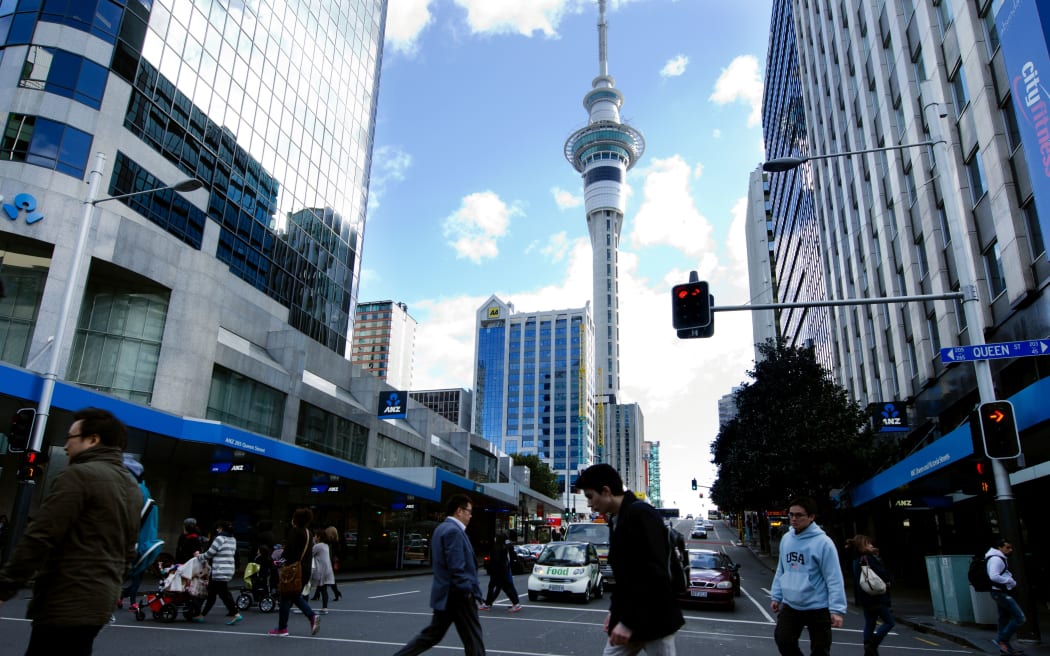
March quarter data from Stats NZ showed an increase in the unemployment rate, from 4 percent in December to 4.3 percent. Photo: 123rf.com
Another 26,000 people may find themselves out of work before the peak in unemployment is reached, forecasters say.
March quarter data from Stats NZ showed an increase in the unemployment rate, from 4 percent in December to 4.3 percent. It said 134,000 people were now unemployed.
That data update did not include most of the public service cuts announced so far this year - RNZ estimates that there have been more than 4550 of these.
ANZ economist Henry Russell said some parts of the public sector where fiscal stimulus was still flowing through continued to grow, particularly education. That could make the overall picture look stronger than it otherwise would.
Without that influence in the labour market data, employment activity was slowing much faster, he said.
"A lot of the weakness of the labour market is masked by the ongoing catch-up effect in employment levels and I do think that's nearing an end and we should see conditions deteriorate."
Stats NZ data showed there were about 47,400 more filled jobs in the New Zealand economy in March than the same time a year earlier.
The increases were concentrated in healthcare and social assistance, up 14,500, public administration and safety, up 8100, and education, up 8700.
But professional services jobs were down by 3400, administration and support services down 3200, manufacturing down 1100 and agriculture, forestry and fishing down 740.
Infometrics chief executive Brad Olsen said it was likely retail would be the next sector to experience a fall. It had only 630 additional roles over the last year, despite strong population growth.

Infometrics chief executive Brad Olsen. Photo: RNZ / Samuel Rillstone
Economist Shamubeel Eaqub said momentum had definitely "come off". He said MBIE's job ads data showed demand for staff had "absolutely crashed".
"March was kind of like GFC-type lows relative to the number of jobs in the economy."
MBIE data shows that online job ads were down 34.8 percent in the year to March and 22.3 percent in the year to April.
He said the number of people on the JobSeeker benefit had been trending higher since the start of 2023. In March there were 187,986 people receiving this benefit, up from 131,721 in March 2019 and 168,498 last year.
Eaqub said there would be more redundancies to come.
Centrix data shows more businesses are hitting trouble. It said in its April update that company liquidations had hit a nine-year high. In March, more than 230 companies were put into liquidation, the highest of any month since March 2015. A quarter were in construction but the rate of liquidation in the retail sector was up 57 percent.
Eaqub said job losses in the SME sector tended to fly under the radar.

Economist Shamubeel Eaqub. Photo: Supplied
"When you see the redundancies is when big businesses fail - job losses happen across the economy, to small and large businesses, but we see the large business failures rather than the small ones. No one notices when the café on the corner closes down except the people who buy coffee from them."
It was estimated in 2022 that an additional 50,000 people would need to find themselves out of work before inflation could be brought under control.
Olsen said 38,000 more people were now unemployed than when that 50,000 figure was first talked about.
"At first glance, it looks like we're more than halfway through the increase, but the economy, and workforce, are larger too. Using the Reserve Bank's latest forecasts from February, there is still another 26,000-person increase in unemployment to see the unemployment rate rise to a peak of 5.1 percent. Over that time, employment is still set to rise too, with a 51,000 job increase forecast by RBNZ."
Russell said it did not mean that tens of thousands more people would be made redundant.
"It's people unemployed … they could be unemployed because there are less jobs available rather than losing their job."
New Zealand's significant migration surge of recent years has increased the size of the employable population markedly.
ASB economists said employment would be flat over the year but larger numbers of people seeking work would push unemployment up.
But Eaqub said, every recession, businesses were more careful about letting go of staff because of how hard it was to find people if they wanted to hire again.
Each time there was a downturn, the unemployment peak was lower, he said.
"If you think back 20 or 30 years when there was a recession people were much more willing to let go of people because they could get them back at any time, that's no longer the case. People say it's because of regulation or this and that. I don't think so.
"I think it's because businesses realise that it's expensive to recruit, train and get someone implemented into the workforce."






